Tujia brocade craftsmanship. Traditional handicrafts of Xiangxi Tujia and Miao Autonomous Prefecture, Hunan Province, China, one of China's national intangible cultural heritage.
The craftsmanship of Tujia brocade is complicated. In weaving, it is woven using an ancient pure wooden waist-type oblique loom, which needs to go through 12 processes such as spinning and twisting, dyeing, reversing, pulling, reeding, rolling, picking up the heald, turning the pole, picking the flower, tying the pole on the machine, weaving, and picking weaving.
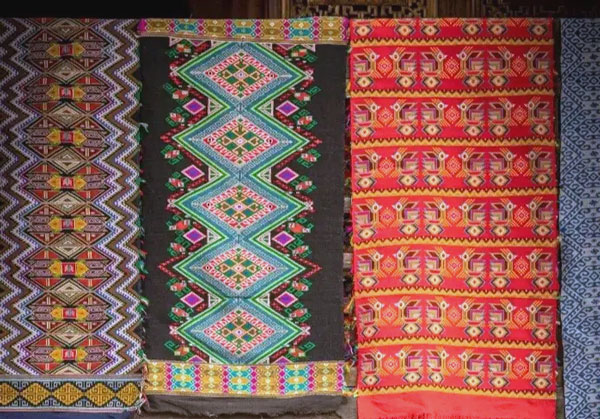
◆ Historical origin
The Xiangxi Tujia brocade craftsmanship has a long history. It has a history of more than 1,500 years since its formation. It can be traced back to the ancient Ba people more than 4,000 years ago. As the ancestors of the Tujia people, the ancient Ba people, in addition to engaging in agricultural production, were also good at weaving, and their "mulberry silkworms" and "hemp" even became tribute.
During the Qin and Han Dynasties, the textile industry in the Tujia area developed, and the Tujia ancestors paid taxes with cloth. During the Three Kingdoms period, the people in the Tujia area gradually mastered the advanced dyeing technology of the Han people and wove colorful "Tujin".
During the Tang and Song Dynasties, with the increase in economic exchanges between the Tujia area and the Han people, the textile industry in the Tujia area developed further, and the social atmosphere of "women are diligent in weaving, and there are many looms in the house" emerged. At that time, the "cloth" of the Tujia people was called "Xibu", "Dongbu" or "Dongjin" by the Han people.
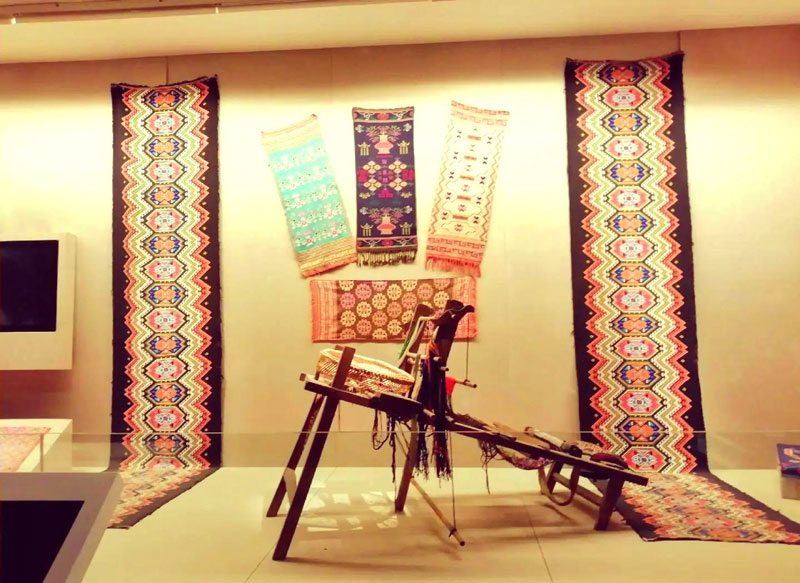
During the Ming and Qing Dynasties, the Xilankapu craft was further developed, and Xilankapu was called "Tujin", "Huabu", etc., and was used in a large number of clothing, gradually forming a unique brocade process.
The weaving skills of Xilankapu of the Tujia people have been further improved, especially for Tujia girls, who have been learning weaving skills from their mothers and sisters since childhood. When girls grow up and get married, they must have Xilankapu woven by themselves as dowry, and the quilts, skirts, backpacks and other items in the cradles of their children after marriage must be woven by girls themselves. Therefore, this craft has been carried forward. Since then, this brocade weaving skill has been passed down from generation to generation.
◆ Craft characteristics
• Patterns
The patterns of Xilankapu cover a wide range of themes, and the content almost covers all aspects of Tujia people's lives. There are more than 200 basic traditional patterns, including flowers, birds, fish, insects, mountains and rivers, and auspicious words. They can also weave pictures of folk stories and fables. The selection of themes is closely related to the life and customs of the Tujia people.
The patterns of Xilankapu include natural image patterns, geometric patterns, and text patterns. The style of these decorative patterns is based on the typical patterns of various historical periods, such as the original geometric patterns, the cloud patterns of the Han Dynasty, the peony of the Tang Dynasty, the pine, bamboo and plum of the Yuan Dynasty, and the lotus of the Ming Dynasty, and is woven through artistic deformation and technical processing.
The composition often uses romantic generalization, deformation, exaggeration and other techniques, cleverly combining various dynamic and static shapes, natural patterns and geometric patterns, making the whole pattern both full of life interest and with distinct national characteristics.
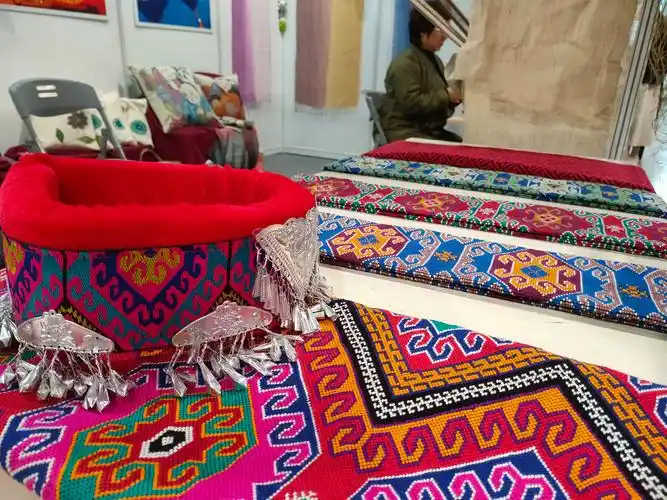
• Color
The colors of the Xilanka pattern are bright and warm, and it likes to use contrasting colors, and uses black and white to set off the hooks. Various hook-shaped, serrated, comb-shaped, stitched, chain-shaped and other borders, plus various polygonal small flowers as embellishments, and a black base and white borders. Therefore, the main and secondary patterns appear to be both clearly defined and connected due to the black and white background.
In the use of colors, Xilankapu has both the colorful and strong contrast of the Tang Dynasty and the elegant and generous tones of the Qing Dynasty. The Tujia people advocate red and black, because red is a warm color, representing light, and black is a cold color, symbolizing solemnity. Therefore, Xilankapu is mainly red, supplemented by black, and interspersed with yellow, blue and white.
◆ Process
The process of Tujia brocade is relatively complicated. Tujia brocade is woven on an ancient pure wooden waist-type oblique loom. Its technical process mainly consists of 12 processes such as spinning and twisting, dyeing, reversing, pulling, installing reeds, rolling, picking up healds, turning poles, picking flowers, tying poles and putting them on the machine, weaving, and picking weaving. In addition, the "reverse weaving method" is used to pick and weave patterns. When weaving, you have to look at the back and weave the front by hand, which requires a skilled memory and expression of patterns and colors.
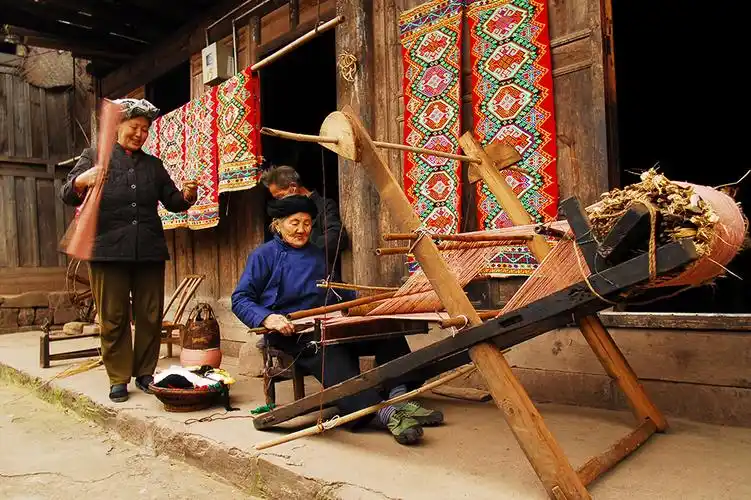
◆ Heritage value
The more than 400 traditional patterns of Tujia brocade are a unique way of expressing the national cultural psychology and cultural accumulation of different eras. They fully demonstrate the creativity of the Tujia people and have a positive witness significance for the formation and development of the multicultural culture of the Chinese nation.
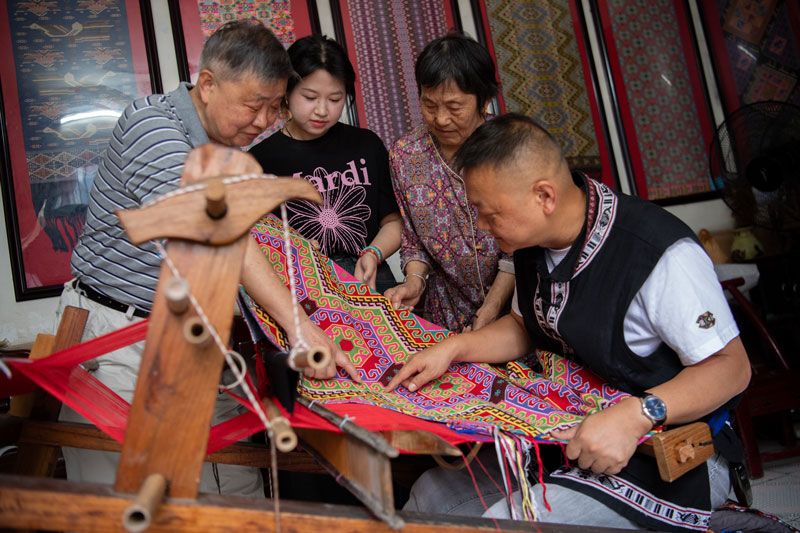
◆ Status of inheritance
With the changes in society, economic structure and cultural consciousness, the Tujia brocade craft is gradually losing the soil and environment on which it depends for survival, and is in a state of total endangerment. Strong measures are urgently needed to protect it.
